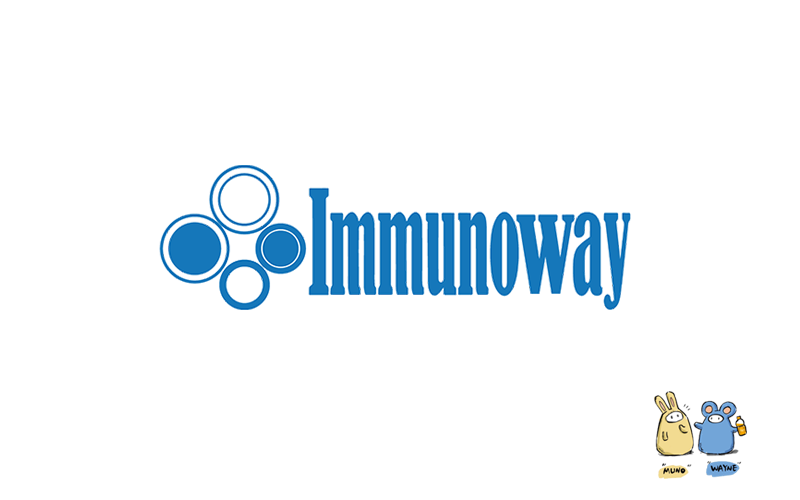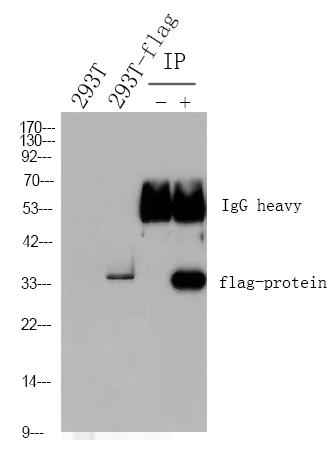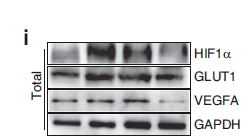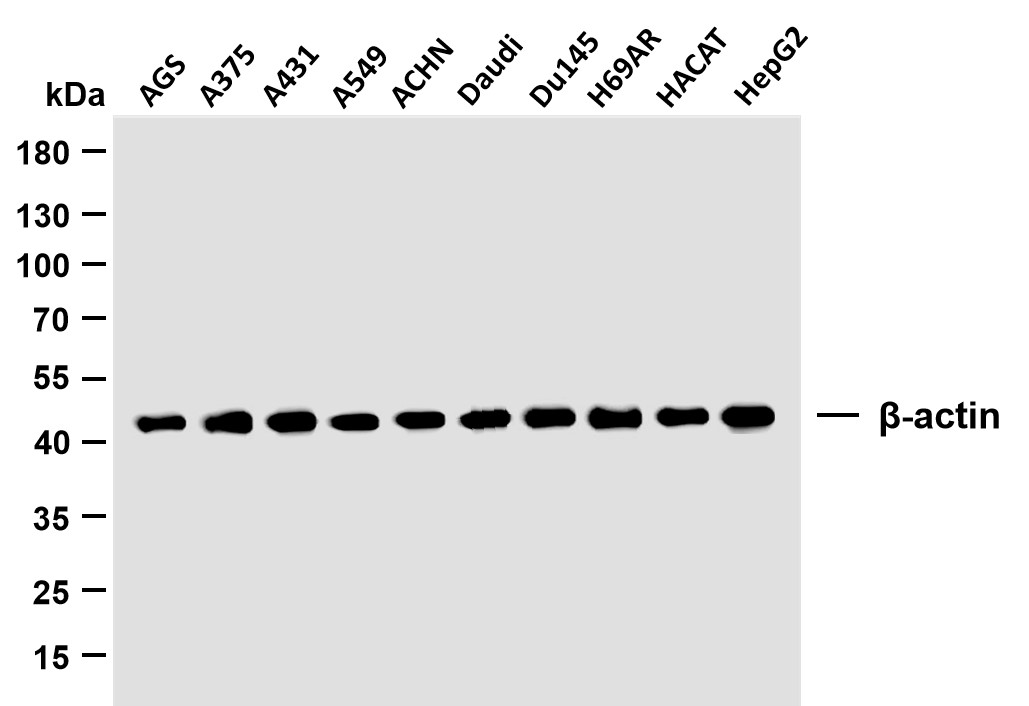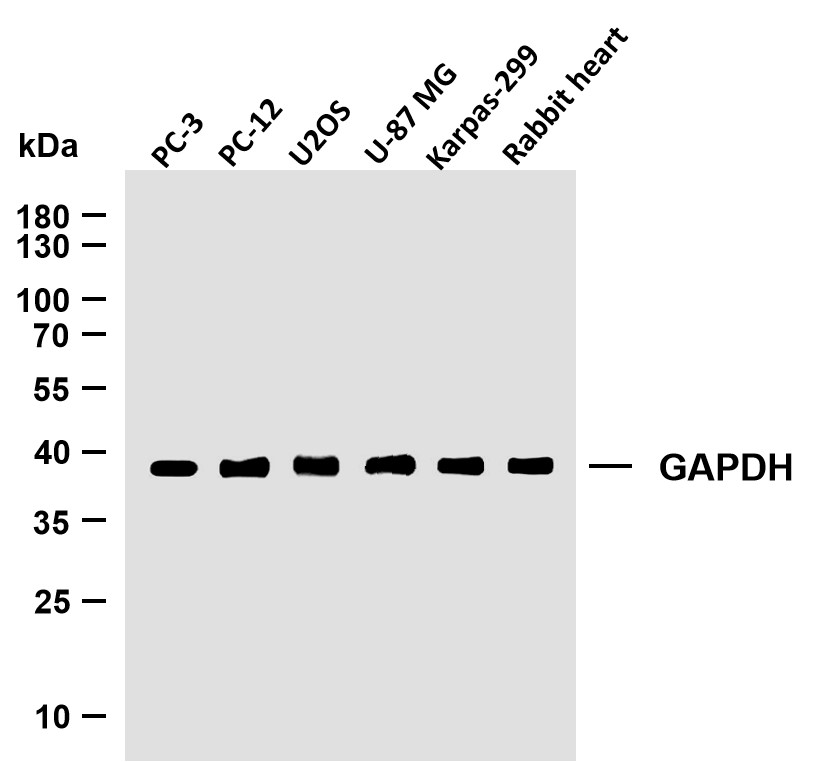
Catalog: YN1038
Size
Price
Status
Qty.
200μL
$450.00
In stock
0
100μL
$280.00
In stock
0
40μL
$150.00
In stock
0
Add to cart


Collected


Collect
Main Information
Target
PEX6
Host Species
Rabbit
Reactivity
Human, Rat, Mouse
Applications
WB, ELISA
MW
107kD (Observed)
Conjugate/Modification
Unmodified
Detailed Information
Recommended Dilution Ratio
WB 1:500-2000; ELISA 1:5000-20000
Formulation
Liquid in PBS containing 50% glycerol, and 0.02% sodium azide.
Specificity
PEX6 Polyclonal Antibody detects endogenous levels of protein.
Purification
The antibody was affinity-purified from rabbit antiserum by affinity-chromatography using epitope-specific immunogen.
Storage
-15°C to -25°C/1 year(Do not lower than -25°C)
Concentration
1 mg/ml
MW(Observed)
107kD
Modification
Unmodified
Clonality
Polyclonal
Isotype
IgG
Related Products
Antigen&Target Information
Immunogen:
Synthesized peptide derived from human protein . at AA range: 480-560
show all
Specificity:
PEX6 Polyclonal Antibody detects endogenous levels of protein.
show all
Gene Name:
PEX6 PXAAA1
show all
Protein Name:
Peroxisome assembly factor 2 (PAF-2) (Peroxin-6) (Peroxisomal biogenesis factor 6) (Peroxisomal-type ATPase 1)
show all
Background:
This gene encodes a member of the AAA (ATPases associated with diverse cellular activities) family of ATPases. This member is a predominantly cytoplasmic protein, which plays a direct role in peroxisomal protein import and is required for PTS1 (peroxisomal targeting signal 1, a C-terminal tripeptide of the sequence ser-lys-leu) receptor activity. Mutations in this gene cause peroxisome biogenesis disorders of complementation group 4 and complementation group 6. Several transcript variants encoding different isoforms have been found for this gene. [provided by RefSeq, Oct 2015],
show all
Function:
Disease:Defects in PEX6 are a cause of Zellweger syndrome (ZWS) [MIM:214100]. ZWS is a fatal peroxisome biogenesis disorder characterized by dysmorphic facial features, hepatomegaly, ocular abnormalities, renal cysts, hearing impairment, profound psychomotor retardation, severe hypotonia and neonatal seizures. Death occurs within the first year of life.,Disease:Defects in PEX6 are the cause of peroxisome biogenesis disorder complementation group 4 (PBD-CG4) [MIM:601498]; also known as PBD-CGC. PBD refers to a group of peroxisomal disorders arising from a failure of protein import into the peroxisomal membrane or matrix. The PBD group is comprised of four disorders: Zellweger syndrome (ZWS), neonatal adrenoleukodystrophy (NALD), infantile Refsum disease (IRD), and classical rhizomelic chondrodysplasia punctata (RCDP). ZWS, NALD and IRD are distinct from RCDP and constitute a clinical continuum of overlapping phenotypes known as the Zellweger spectrum. The PBD group is genetically heterogeneous with at least 14 distinct genetic groups as concluded from complementation studies.,Function:Involved in peroxisome biosynthesis. Required for stability of the PTS1 receptor. Anchored by PEX26 to peroxisome membranes, possibly to form heteromeric AAA ATPase complexes required for the import of proteins into peroxisomes.,similarity:Belongs to the AAA ATPase family.,subcellular location:Associated with peroxisomal membranes.,subunit:Interacts directly with PEX26 and PEX1. Mediates the indirect interaction between PEX1 and PEX26.,
show all
Cellular Localization:
Cytoplasm. Peroxisome membrane . Cell projection, cilium, photoreceptor outer segment . Associated with peroxisomal membranes. Localized at the base of the outer segment of photoreceptor cells (PubMed:26593283). .
show all
Tissue Expression:
Expressed in the retina, at higher levels in the photoreceptor layer at the joint between the outer and inner segments.
show all
Research Areas:
>>Peroxisome
show all
Signaling Pathway
Reference Citation({{totalcount}})
Catalog: YN1038
Size
Price
Status
Qty.
200μL
$450.00
In stock
0
100μL
$280.00
In stock
0
40μL
$150.00
In stock
0
Add to cart


Collected


Collect
Recently Viewed Products
Clear allPRODUCTS
CUSTOMIZED
ABOUT US
Toggle night Mode
{{pinfoXq.title || ''}}
Catalog: {{pinfoXq.catalog || ''}}
Filter:
All
{{item.name}}
{{pinfo.title}}
-{{pinfo.catalog}}
Main Information
Target
{{pinfo.target}}
Reactivity
{{pinfo.react}}
Applications
{{pinfo.applicat}}
Conjugate/Modification
{{pinfo.coupling}}/{{pinfo.modific}}
MW (kDa)
{{pinfo.mwcalc}}
Host Species
{{pinfo.hostspec}}
Isotype
{{pinfo.isotype}}
Product {{index}}/{{pcount}}
Prev
Next
{{pvTitle}}
Scroll wheel zooms the picture
{{pvDescr}}







